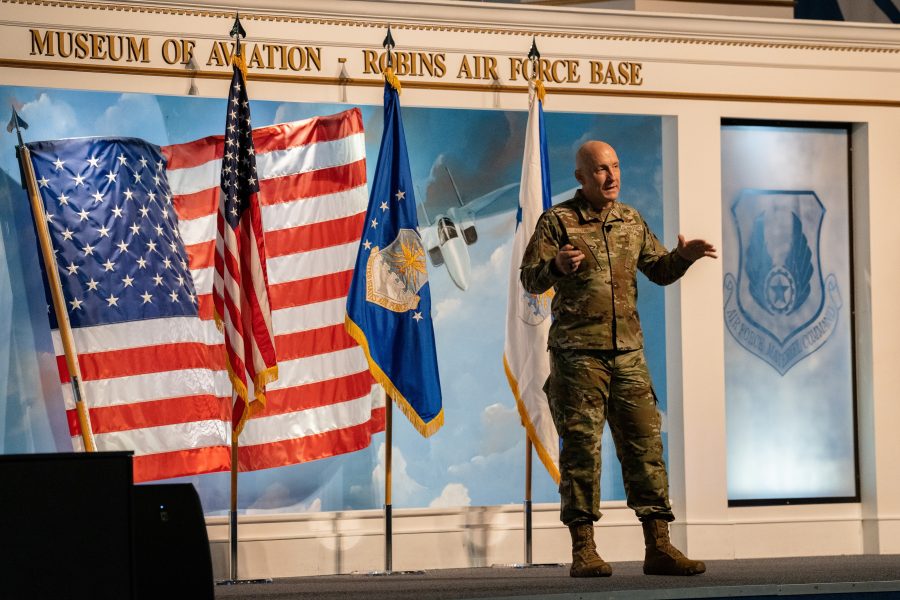The Air Force has committed to major programs over the past several years: the B-21 Raider stealth bomber, the Sentinel intercontinental ballistic missile, and the Next-Generation Air Dominance (NGAD) fighter and associated Collaborative Combat Aircraft
Sentinel has run massively over its initial cost projection. CCA—autonomous, loyal wingman drones—seems to be on track. But while the budgetary profiles of the two programs stand in stark contrast, they each have a concept of modularity built in; they are intended to be relatively easy to upgrade, Air Force officials say.
Now, the Air Force wants to push that concept of adaptability even further.
During a recent wide-ranging interview with Air & Space Forces Magazine, Chief of Staff of the Air Force Gen. David W. Allvin explained his view of how the Air Force should think about new programs in the future.
“Think systems over platforms,” Allvin said during an Aug. 14 interview. “That’s the environment we’re adapting to. So a systems-first approach, against which platforms who do things can maybe come and go. So that way, maybe those platforms can solve for agility and pop that one out, put another one in, and you’ve better enabled.”
Allvin’s watchword in his first year as Chief has been “agility,” arguing that the technological change is rapid, the character of war is changing, and the service needs to keep pace.
In July, Allvin floated the idea of “built to adapt” over “built to last,” underscoring the importance of not being committed to a single design for decades. That did not refer to any specific program, but rather to the concept of developing manned and unmanned platforms that are built to rapidly and quickly adopt new technology.
It is an approach he expanded on during an Aug. 21 media roundtable.
“I’m not saying it is ubiquitous across everything, but as a general proposition, it is a methodology that allows you to adapt to technology faster,” Allvin said. “If one is going to build something that is going to be crewed—with however many crew members in it—if you build in the modularity toward it, it continues to have the ability to ingest new technology and stay as part of the overall system, ‘Giddy up. We’ll keep that.’”
Allvin said he would not completely rule out a future low-cost crewed fighter—a notional image of one appeared during one of his recent presentations—in keeping with his overall philosophy of being open to new technology. He has previously said the Air Force is committed to buying at least 100 B-21s but will not foreclose a change in long-term plans if technological progress leads to something more capable.
“Whatever platform you’re going to build, it’s got to integrate,” Allvin said in his Aug. 14 interview. “That way, when the system gets upgraded, it’s at the speed of software, and everything gets upgraded with it because you’ve built the platform to build into the system rather than building platform-unique things. … Why? The pace of change. That’s the environment we’re adapting to.”
Allvin has previously said that the service learned lessons from Collaborative Combat Aircraft about adapting to new technology that could be used for anything, not just iterations of new drones.
“It’s not just the attritable or expendable” systems that can benefit the Air Force as technology changes, Allvin said Aug. 21. “I’m happy if it’s built to last if it adapts to what the technology does … and helps you employ new technology faster. That becomes the coin of the realm for all the platforms, whether they last for five years or 50.”

